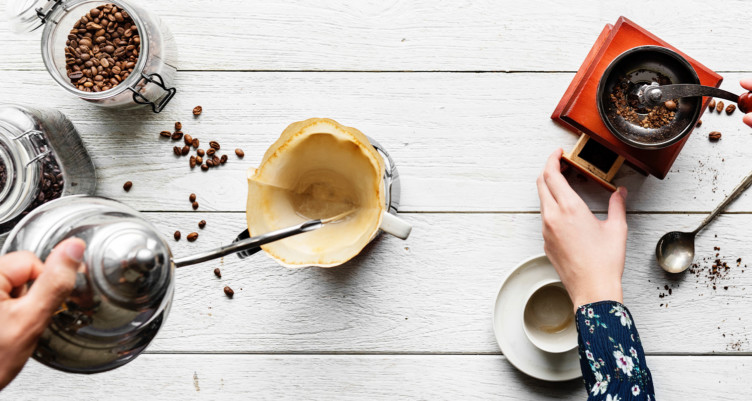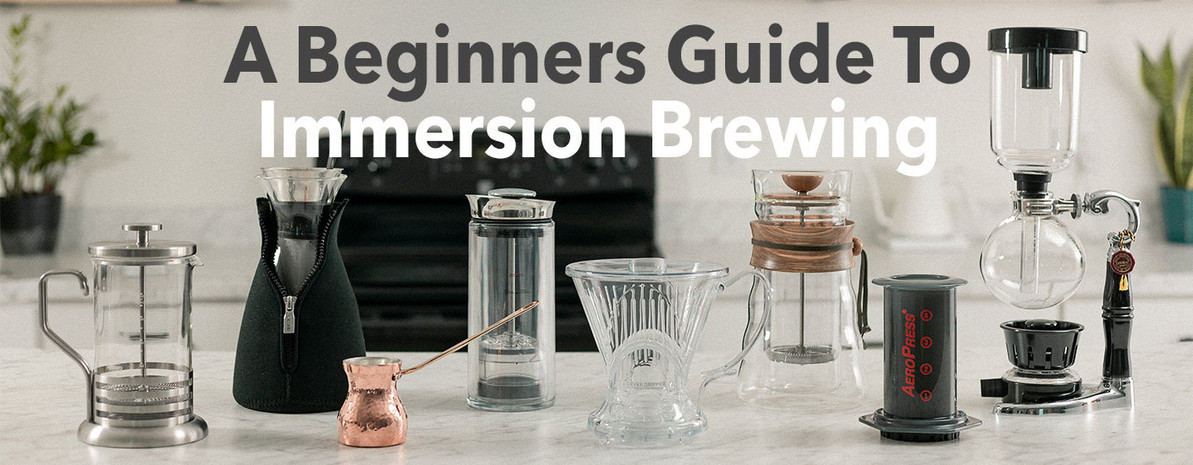Cutting-edge Coffee Brewing Methods to Boost Your Early Morning Habit
Cutting-edge Coffee Brewing Methods to Boost Your Early Morning Habit
Blog Article
The Science Behind Coffee Developing: Just How Temperature Level and Time Affect Your Drink
Comprehending the science behind coffee developing discloses that temperature and time are not mere variables yet critical aspects that determine the beverage's flavor account and overall quality. The optimum developing temperature level normally drops in between 195 ° F and 205 ° F, while the period of removal differs substantially throughout different techniques. This interplay of elements can cause a mug that is either unsatisfactory or fascinating. As we discover the nuances of these aspects, the concern emerges: how can one efficiently balance temperature and time to achieve that perfect brew?
The Chemistry of Coffee Removal
The chemistry of coffee extraction delves right into the intricate processes that change raw coffee beans right into the aromatic drink taken pleasure in worldwide. This change primarily involves the solubility of various compounds existing in the beans, which are affected by elements such as work size, water top quality, and the brewing technique used.
During the brewing procedure, warm water works as a solvent, drawing out soluble compounds, including caffeine, sugars, lipids, and acids, from the coffee grounds. Each compound adds to the flavor account, scent, and body of the last beverage. As an example, acids are in charge of tasty and brilliant notes, while oils add to an abundant mouthfeel.
The removal process is not uniform; different compounds liquify at various prices. The first stages of brewing extract acids and sugars, resulting in a pleasurable level of acidity, while long term removal can lead to bitterness because of over-extraction of unfavorable compounds. Comprehending these chemical communications is critical for maximizing developing strategies, as the equilibrium in between removal time and water temperature level can dramatically affect the total top quality of the coffee. Inevitably, understanding the chemistry of coffee removal is crucial to attaining a all-round and delicious mug.
Perfect Developing Temperatures
Locating the ideal brewing temperature is essential for opening the full potential of coffee tastes and scents - coffee brewing methods. Research shows that the ideal range for developing coffee lies between 195 ° F to 205 ° F(90 ° C to 96 ° C) Within this variety, the extraction procedure efficiently dissolves the preferable soluble compounds in coffee beans, bring about a balanced and flavorful mug
Brewing at reduced temperatures, such as listed below 195 ° F(90 ° C ), may cause under-extraction, yielding an acidic and weak brew with low-key flavors. Alternatively, brewing at temperature levels surpassing 205 ° F(96 ° C) can bring about over-extraction, creating a bitter and harsh taste because of the extreme dissolution of unwanted compounds, such as tannins.
In addition, the suitable developing temperature can differ depending on the coffee bean type and roast degree. As an example, lighter roasts commonly take advantage of slightly greater temperature levels to enhance their complicated taste profiles, while darker roasts may be much better matched to lower temperatures to minimize bitterness.
Ultimately, maintaining precision in developing temperatures is crucial for accomplishing a harmonious balance of flavors, guaranteeing that every mug of coffee provides an enjoyable sensory experience.
Effect of Developing Time
Developing time plays a crucial duty in determining the taste profile and overall quality of coffee. The extraction procedure, which affects the preference, scent, and body of the beverage, is mostly based on for how long the coffee grounds touch with water. Much shorter developing times can lead to under-extraction, resulting in a sour or weak flavor, as not nearly enough soluble substances are liquified. On the other hand, extended brewing can bring about over-extraction, where unwanted substances are released, resulting in an astringent or bitter preference.
Optimum brewing time differs depending upon the method made use of and the work size of the coffee. For example, a French press usually requires concerning four mins, while espresso extraction is normally completed within 25 to 30 secs. It is necessary to adjust brewing time in combination with other variables, such as water temperature level and coffee-to-water ratio, to accomplish the desired flavor account.
Understanding the influence of brewing time allows coffee enthusiasts to fine-tune their brewing techniques, eventually boosting the sensory experience of their cup (coffee brewing methods). With mindful focus to this variable, one can open the full possibility of the coffee, exposing its one-of-a-kind features and nuances
Developing Techniques and Their Effects

For example, techniques like French press and chilly mixture permit a much longer steeping time, causing a fuller body and durable taste as a result of increased extraction of oils and soluble solids. Conversely, espresso brewing utilizes high pressure and a shorter removal time, generating a focused shot that stresses extreme tastes and an abundant crema.
Pour-over methods, such as Chemex or V60, use an even more controlled extraction process, allowing the brewer to adjust circulation price and water circulation, which can improve brightness and clarity. Percolation methods cycle water through the coffee grounds numerous times, leading to a more powerful, often bitter flavor.
Lastly, the use of paper filters versus metal filters can likewise influence the last preference; paper filters normally generate a cleaner cup by trapping oils and great bits, while metal filters permit even more oils to go through, adding to a fuller mouthfeel - coffee brewing methods. Recognizing these subtleties can elevate the coffee experience significantly
Tips for Developing Your Mixture
A well-executed brew can transform also the simplest try this website coffee right into an exceptional experience. To accomplish this, attention to information is important. Start with high-grade, newly roasted beans, as their taste profile lessens in time. Grind the beans just prior to making to make best use of freshness, ensuring the grind dimension matches your brewing approach-- coarser for French press and finer for espresso.
Water quality plays a crucial function; usage filtered water without contaminations. The optimal developing temperature ranges in between 195 ° F and 205 ° F(90 ° C to 96 ° C ) Too hot can swelter the coffee, while too amazing may under-extract tastes.
Timing is just as important. For immersion techniques, soaking for 3 to five minutes is ideal, whereas drip approaches typically take around 5 mins. Trying out brew times to discover your favored toughness.

Conclusion
In summary, the intricate relationship between temperature and time is critical in the coffee brewing process. Adhering to optimal brewing temperature levels in between 195 ° F and 205 ° F, along with specific timing customized per approach, makes sure the preferred taste profile is achieved. Understanding these scientific concepts encourages people to fine-tune their brewing techniques, inevitably bring about an extra delightful and well balanced coffee experience. Proficiency of these variables is crucial for any type of coffee lover seeking quality in their drink.
Recognizing the scientific research behind coffee brewing exposes that temperature and time are not plain variables however crucial aspects that dictate the drink's flavor account and overall high quality. Understanding these chemical communications is essential for maximizing brewing strategies, as the balance investigate this site in between extraction time and water temperature level can significantly affect the overall high quality of the coffee.Developing time plays a critical duty in identifying the taste profile and general top quality of coffee. By focusing on these aspects-- bean quality, grind size, water temperature level, soaking time, and ratio-- you can raise your coffee developing process, resulting in a regularly superior mug.
In summary, the complex partnership between temperature level and time is extremely important in the coffee brewing process.
Report this page